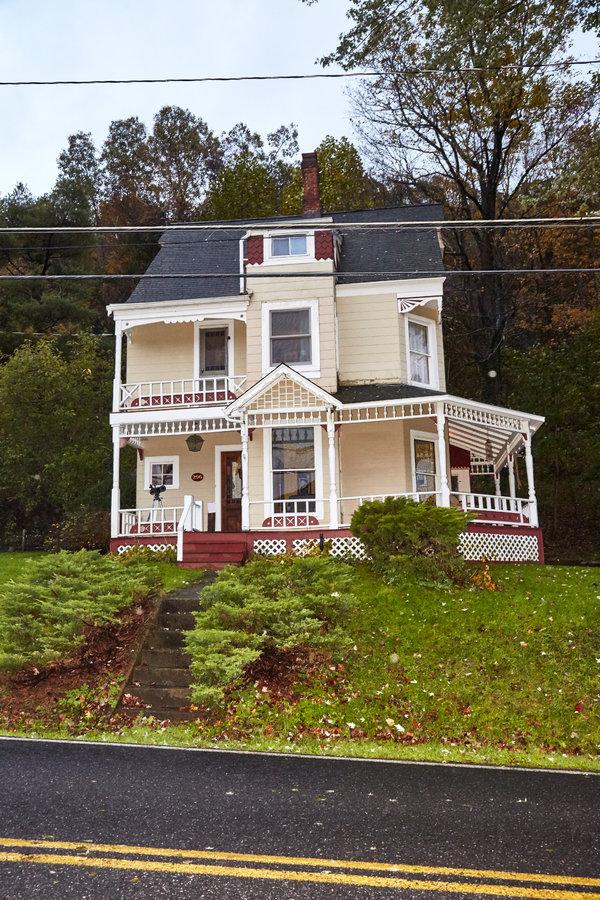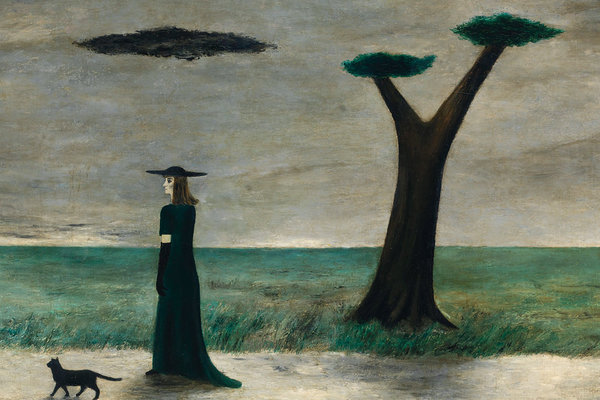Today, witches are big business: Boutiques and chains alike are stocked with sage, crystals, spell books and other witchy accouterment, and high-end brands like Gucci have pounced. (The design house dressed models up as tarot cards for an ad campaign last year, and this year, cast Tippi Hedren of “The Birds” fame as a soothsaying crystal ball gazer in a short video.) Sephora, too, recently planned to stock a Starter Witch Kit from Pinrose in stores, but it was pulled after some protested that it was culturally appropriative.
And now there’s witch-themed adult sleep-away camp. And it wouldn’t be witchy if it didn’t start with some ritual sage burning, right?
The smoky scent permeated OlioHouse, a Victorian-style home in Wassaic, N.Y., where a group of 20- and 30-somethings arrived last Saturday after a three-hour pilgrimage from Brooklyn. They had been lured north by a spellbinding weekend of witches, art and spookiness hosted by Think Olio, a pop-up lecture series founded by Chris Zumtobel and David Kurfirst.
On Saturday afternoon, the group formed a circle on the floor of OlioHouse’s backyard barn for a two-part lecture on the economic and societal impact of the witch trials of the 16th and 17th centuries.
“It’s one of those where the environment will make the class,” said Mr. Zumtobel, looking out the barn window as the wind swept colorful leaves across the ground and fog spilled ominously across the mountains.

The OlioHouse in Wassaic, N.Y., where the company hosts lectures and sleepovers.CreditAmy Lombard for The New York Times
Inside the barn, Lauren Hudson, a doctoral candidate at CUNY’s Graduate Center, who researches anticapitalist organizing, explained how the witch trials in Europe and in the United States were an expression of state oppression by communities bent on growing an obedient, wage-earning labor force. Hundreds of thousands of women accused of being witches died in Europe and the United States, in cities like Salem, Mass., because they didn’t exactly fit the strictures of society.
Oh, how times have changed.
Between lectures and a Halloween party, glitter, devil horns and bottles of wine came out. CreditAmy Lombard for The New York Times
Of course, the witches of Ms. Hudson’s lecture knew nothing of kitschy kits or Italian luxury. These were women who were persecuted and murdered because they were poor, old, strong-willed and rebellious. Neighbors summoned them to help when they were sick or in love; when they needed contraception or an abortion; when they lost objects; and when they wanted to know the future. Women were seen as leaders in revolts against taxation, rising food prices and land privatization, Ms. Hudson said, making them a threat to people in positions of power.
During a break between lectures, a stack of essays on the history of the witch hunts was mostly forgotten as the students trooped over to the open studios at the Wassaic Project, an artist residency program nearby. Inside the damp barn-cum-studios, one of the artists, Hunter Creel, described his plans to rebury a coffin shaped to his dimensions (he has buried and excavated it once before, in Iowa). The rain pattered ominously on the roof. Another artist, Goldie Poblador, handed out milky pink- and blue-hued sake in shot glasses shaped like vaginas. Her work, she said, references folk tales about seductive women being turned into flowers.
“Witchcraft is definitely having a major resurgence,” said Tara Kenny, one of the Olio students and a court advocate for incarcerated youth, during a lull before dinner back at OlioHouse. She cited Netflix’s new spin on “Sabrina the Teenage Witch,” the CW’s reboot of “Charmed,” and a profusion of articles in publications like Vice, Buzzfeed and Teen Vogue as evidence.
“Fear of women organizing and the power of women is kind of connected to things happening in politics today,” Ms. Kenny said, referencing the Women’s March and the record-breaking female wins in this year’s House and Senate primary elections.
What’s a witch in the 21st century? Anything you want it to be!CreditAmy Lombard for The New York Times
Later in the evening, the group changed into costumes — devil ears, sparkly wigs, a flower power jumpsuit, and clothes in maroon hues that once indicated cult membership — and headed out to a haunted house in a seven-story mill hosted by the Wassaic Project.
Left behind, on a wall in the dining room, was a poster with blue and yellow scribbles that the students had filled out during dinner. The heading offered a prompt: “Things That Make Me a Witch.” The answers said as much about the authors as they did about our times: “I study astrology,” “acid,” “speak to plants,” “steal data from Google,” “spellbinding,” “my birth control” and “queer.”








